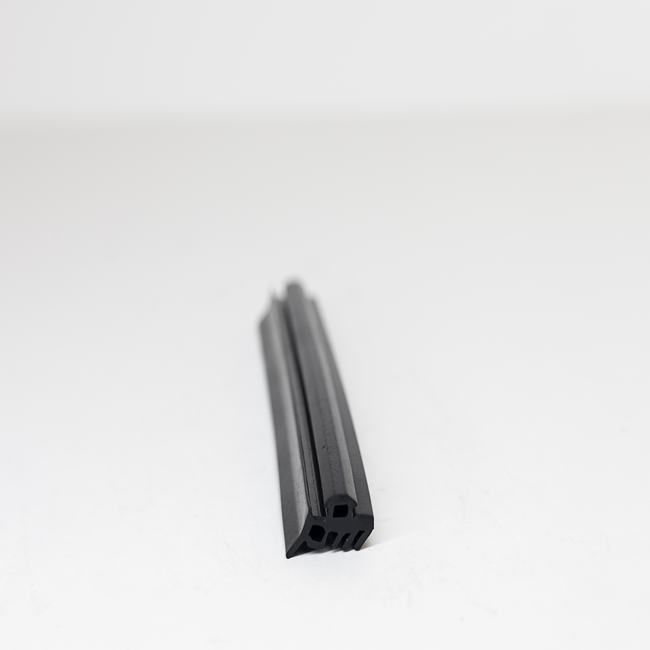Steel door seals, also known as door weatherstripping or door gaskets, are essential components used in the construction of doors, particularly exterior doors, to provide a secure and weather-resistant barrier between the door and its frame. These seals play a crucial role in maintaining a building’s energy efficiency, security, and overall comfort by preventing the ingress of elements such as rain, wind, dust, and pests, as well as aiding in thermal insulation. Below is a comprehensive description of steel door seals:
1. Purpose and Function:
Steel door seals serve multiple essential functions, including:
- Weatherproofing: They create a tight seal to prevent the entry of rainwater, drafts, and wind, ensuring that the interior of a building remains dry and comfortable.
- Energy Efficiency: By sealing gaps and preventing air leakage, steel door seals contribute to improved insulation, reducing heating and cooling costs.
- Sound Insulation: They help dampen external noise, enhancing the acoustic comfort within a building.
- Security: Steel door seals enhance the security of a building by providing an extra barrier against unauthorized access and forced entry.
- Aesthetic Appeal: In addition to their functional roles, door seals can also enhance the appearance of doors, especially when designed to match the door’s finish.
2. Types of Steel Door Seals:
There are various types of steel door seals designed to meet specific requirements and applications. Some common types include:
- Astragal Seals: These seals are used on double doors, providing a weatherproof barrier between the meeting stiles of the doors.
- Threshold Seals: Installed at the bottom of the door to seal the gap between the door and the floor, these seals help prevent air and water infiltration.
- Jamb Seals: These seals are applied to the door frame and provide weatherproofing along the sides of the door.
- Sweeps and Bulbs: Often installed on the bottom of doors, sweeps and bulb seals create a seal by brushing or compressing against the threshold.
- Gasket Seals: These seals use a flexible gasket material to create a barrier between the door and frame, ensuring a tight seal.
3. Materials and Construction:
Steel door seals are typically constructed from various materials, depending on their intended use and the level of protection required. Common materials include:
- EPDM (Ethylene Propylene Diene Monomer): Known for its excellent weather resistance, UV stability, and durability.
- Silicone: Highly resistant to extreme temperatures and UV radiation, making it suitable for outdoor applications.
- Nitrile Rubber: Offers good weather resistance and is often used in conjunction with steel door seals for added durability.
- PVC (Polyvinyl Chloride): Resistant to chemicals and abrasion, commonly used in industrial applications.
4. Installation and Maintenance:
Proper installation is critical to the effectiveness of steel door seals. This involves accurately measuring the door and frame, ensuring a snug fit, and securing the seal in place with appropriate fasteners or adhesive. Regular maintenance may include cleaning the seals, inspecting for wear or damage, and replacing them when necessary to maintain their effectiveness.
5. Applications:
Steel door seals find application in various settings, including:
- Residential Doors: Used on exterior entry doors, garage doors, and patio doors to maintain comfort and security.
- Commercial Buildings: Installed on storefronts, office entrances, and warehouse doors for weatherproofing, security, and energy efficiency.
- Industrial Facilities: Used on heavy-duty doors, loading dock doors, and cold storage doors to ensure a tight seal.
- Specialized Environments: In settings such as laboratories, clean rooms, and manufacturing facilities where environmental control is crucial.
In conclusion, steel door seals are indispensable components in the construction of doors, playing a vital role in maintaining a building’s energy efficiency, security, and overall comfort. They come in various types and materials, tailored to specific applications, and are essential for both residential and commercial buildings as well as industrial facilities. Proper installation and maintenance are key to ensuring their long-term effectiveness.









